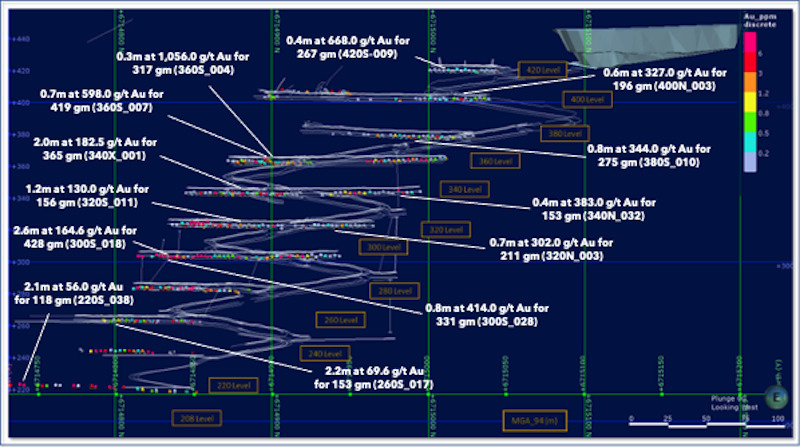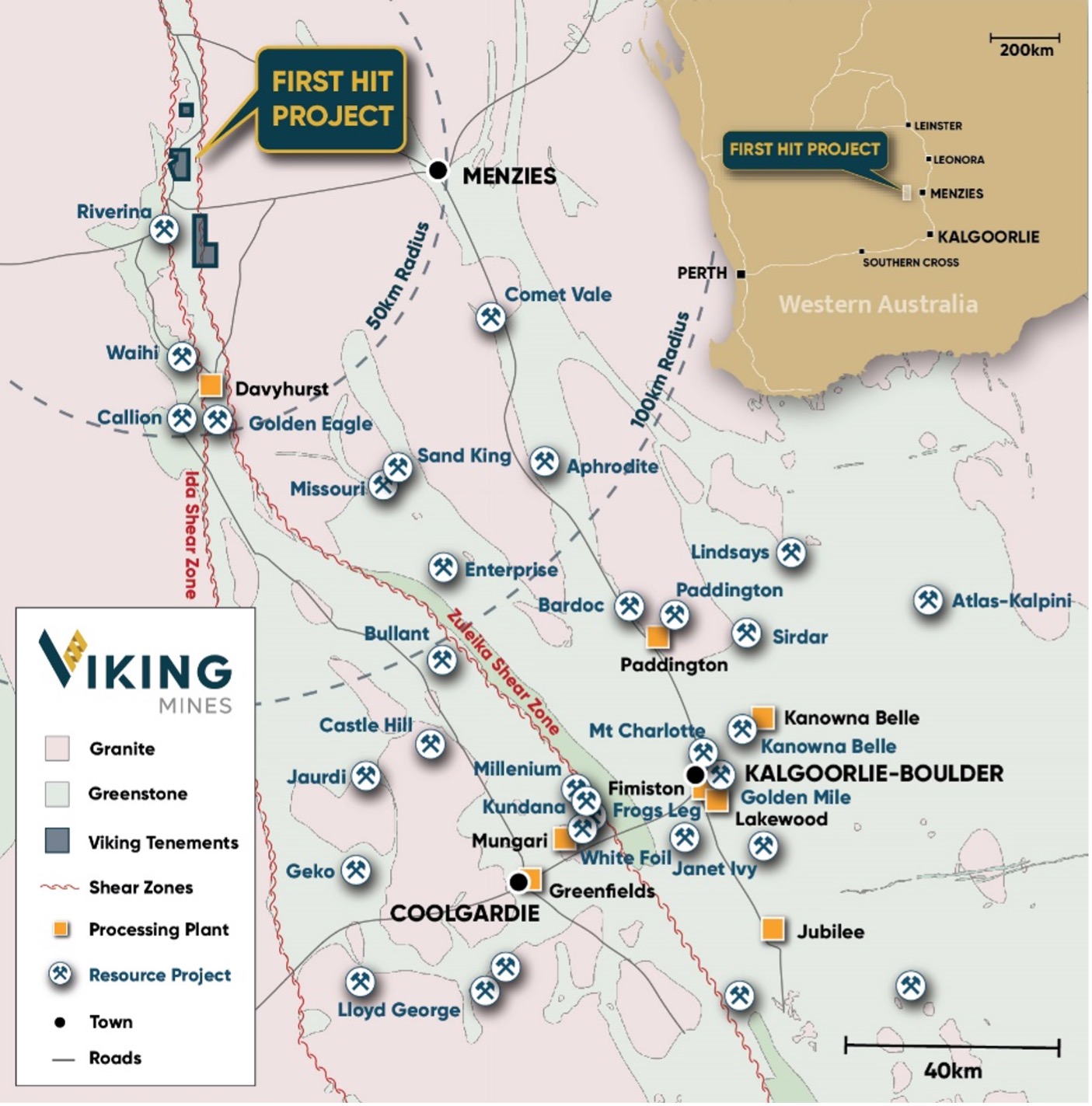Viking reveals ‘exceptionally high-grade’ gold at First Hit
Mining
Mining
Viking Mines has identified exceptionally high-grade gold mineralisation from underground face sampling data at its First Hit project near Kalgoorlie.
A number of results above 100 grams per tonne were reported from multiple levels in the workings at the historic mine, including one above 1000g/t.
Standout intervals reported by Viking (ASX:VKA) were as follows:
The term gram metre refers to the grams per tonne of gold, multiplied by the intersection length above a pre-determined cut-off grade – in this case 5g/t.

The results provide Viking with valuable information on the distribution of nuggety gold, which it said was important for drill targeting and potential strike extensions at First Hit.
The mineralisation is said to be typical of narrow, high-grade laminated gold deposits found in the Eastern Goldfields, such as that at Northern Star’s (ASX:NST) Raleigh deposit.
Viking CEO Julian Woodcock said the latest results were a tremendous outcome for the ongoing work at First Hit.
“As part of the historical data review, we have now focused our attention on the underground face samples collected during mining,” he said.
“These results have yielded some amazingly high grades at multiple levels across the historic workings.
“The very significant values encountered strongly support the high-grade potential of this system and give a better insight into the narrow vein, high grade style of mineralisation we can expect to encounter in the diamond drilling.”
Plans for a diamond drilling campaign at First Hit are ongoing. Today’s news comes on the back of high-grade gold intercepts identified in the historic database at First Hit earlier in the week.
VKA said the next steps in its ongoing data collection and interpretation program taking place would focus on the following:
Today’s announcement is the latest in a stream of newsflow out of Viking this year, which started with Woodcock’s appointment in the first week of January.
Shortly after, Viking picked up a tenement 11km south-southeast of First Hit, and followed it up with the acquisition of the underexplored tenements immediately south of the historic mine.
Red Dirt Mining, the now 100%-owned subsidiary company which holds the First Hit project, was formally acquired at the start of this month, and the current exploration program kicked off last week.
Located 150km northwest of Kalgoorlie, First Hit sits 8km north of Ora Banda Mining’s (ASX:OBM) Riverina open pit, with the nearest operating gold processing plant is the Davyhurst Mill also owned and operated by Ora Banda Mining.

The project was last mined in 2002 by Barra Resources and Barminco, and was shuttered due to the low gold price environment despite delivering at cash costs of just US$354 per ounce.
It has barely been touched since, despite historic assays reported by Barra in 2002 which include:
Below the historic mineral resource:
Laterally adjacent to the historic mineral resource:
Above the mined workings:
This article does not constitute financial product advice. You should consider obtaining independent advice before making any financial decisions.